
Deutsch-Chinesische Enzyklopädie, 德汉百科
 Important port
Important port

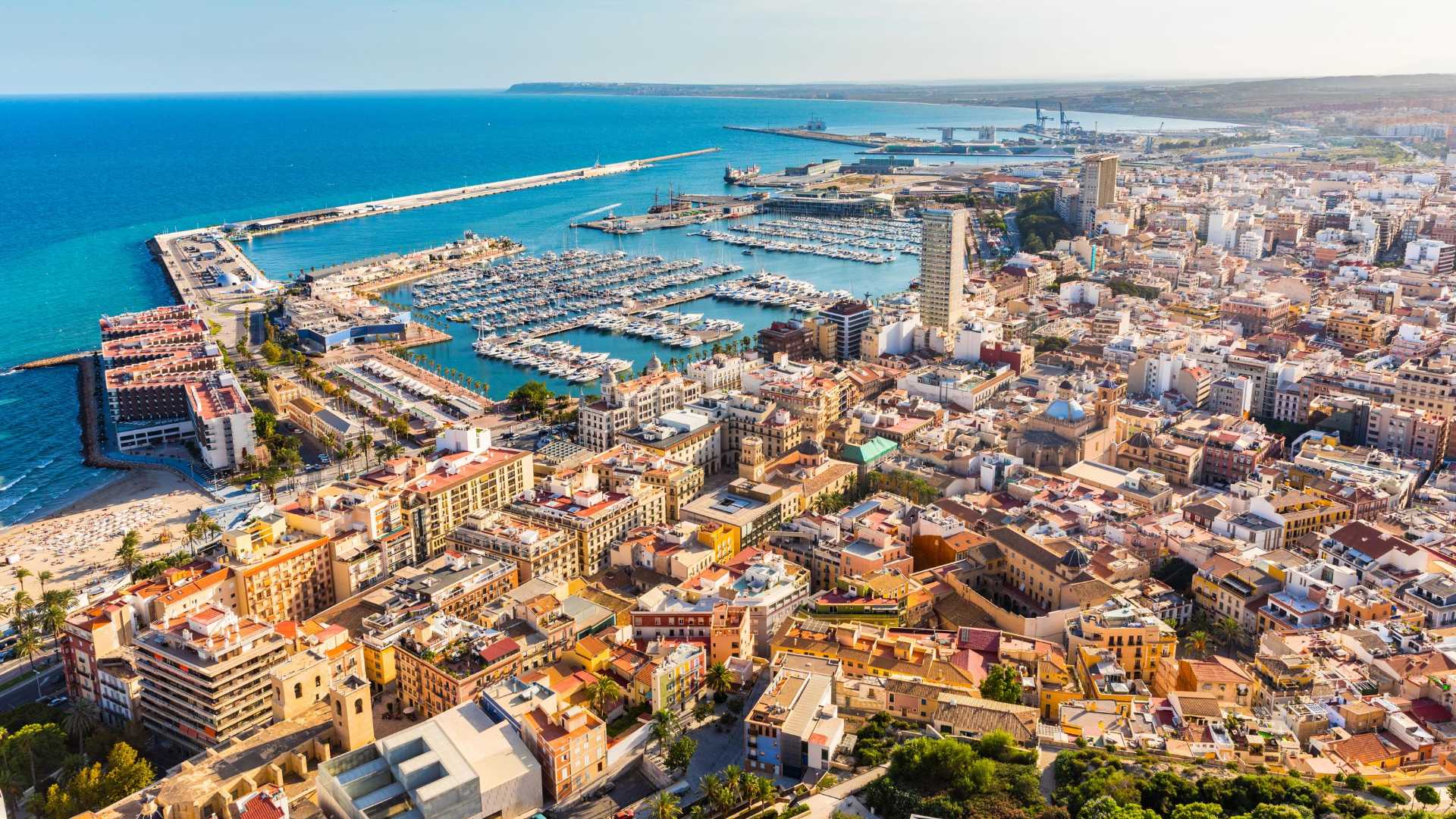
Alicante (spanisch) bzw. Alacant (valencianisch) ist eine spanische Hafenstadt an der Costa Blanca mit 338.577 Einwohnern (Stand: 1. Januar 2022). Alicante ist die Hauptstadt der gleichnamigen Provinz und nach Valencia die wichtigste Stadt der autonomen Valencianischen Gemeinschaft.
Ihre Wirtschaft basiert hauptsächlich auf Tourismus und Weinproduktion. Neben Wein werden auch Olivenöl und Obst exportiert. Daneben gibt es Leichtindustrien wie die Lebensmittelverarbeitung sowie eine Leder-, Textil- und Steinzeugindustrie. Außerdem ist Alicante seit 1994 der Sitz des Amts der Europäischen Union für Geistiges Eigentum.
阿利坎特(西班牙语:Alicante;巴伦西亚语:Alacant)是西班牙巴伦西亚自治区,阿利坎特省的首府,在地中海旁,是重要的海港,有西班牙最古老的铁路连接。
它亦是欧盟商标局总部所在地。
 Eurovision Song Contest,ESC
Eurovision Song Contest,ESC
 UEFA European Championship 2020
UEFA European Championship 2020

 International cities
International cities
 *European Capital of Culture
*European Capital of Culture
 Netherlands
Netherlands
 Olympic Summer Games
Olympic Summer Games
 1928 Summer Olympics
1928 Summer Olympics

 World Heritage
World Heritage

 Important port
Important port
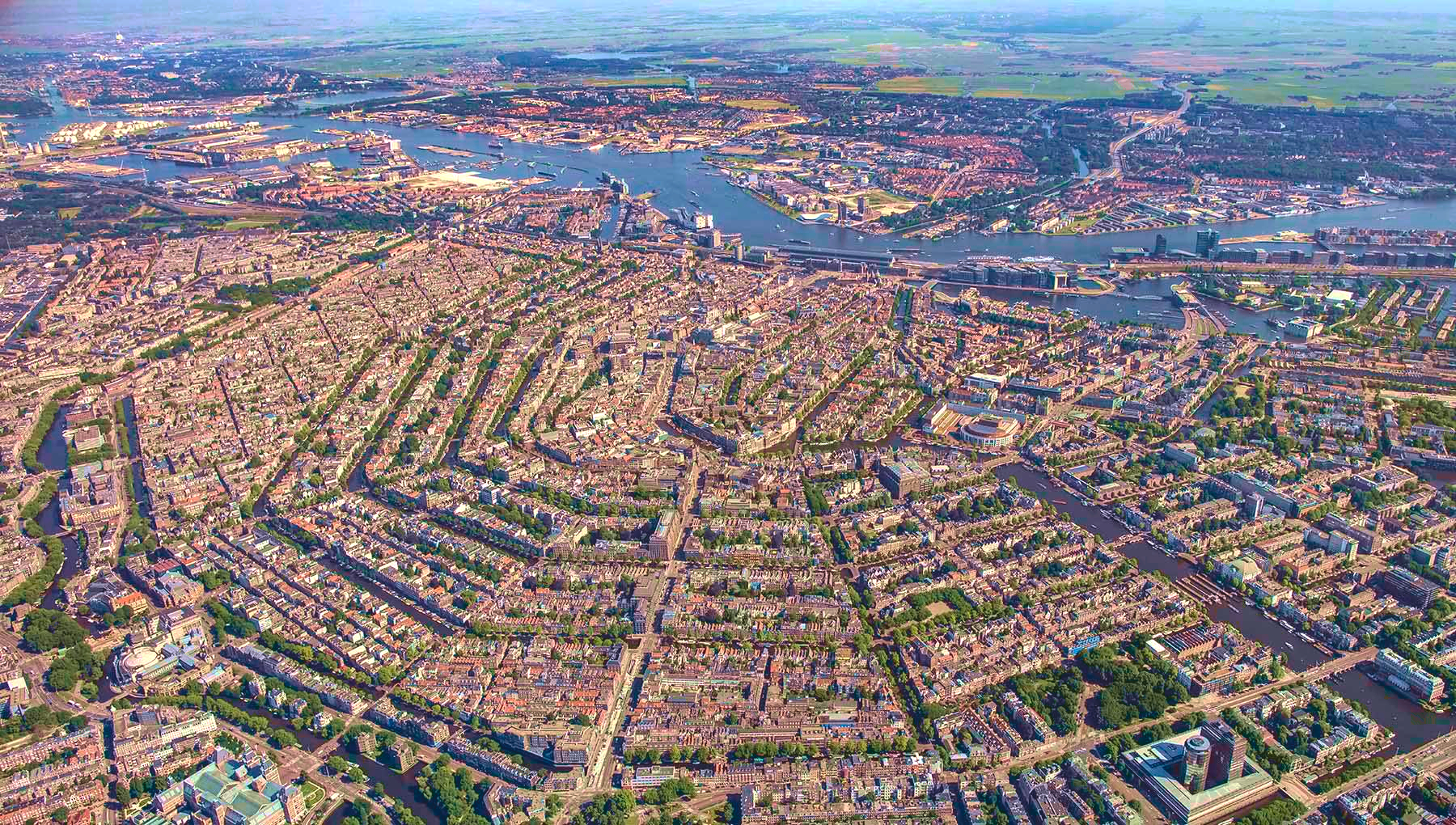
阿姆斯特丹(荷兰语:Amsterdam[ɑmstərˈdɑm] ),是荷兰首都及最大城市,位于该国西部省份北荷兰省。根据2008年1月的统计数据,这座城市人口达747,290人;而该城市所处的兰斯台德都市圈,大约有670万人口,是欧洲第6大都市圈。
其名称源于Amstel dam,这表明了该城市的起源:一个位于阿姆斯特尔河上的水坝,即今水坝广场址。12世纪晚期一个小渔村建于此,而后由于贸易的迅猛发展,阿姆斯特丹在荷兰黄金时代一跃而成为世界上最重要的港口。在那个时代,该城是金融和钻石的中心。 19和20世纪,该城扩展,许多新的街坊与近郊住宅区形成。
阿姆斯特丹是荷兰的金融和文化首都。许多荷兰大型机构的总部都设于此,其中包括飞利浦和ING等7家世界500强企业的总部。作为泛欧交易所的一部分,阿姆斯特丹证券交易所坐落于城市中心。阿姆斯特丹有很多旅游景点,包括历史悠久的运河网、荷兰国家博物馆、凡·高博物馆、安妮之家、红灯区以及许多大麻咖啡馆。每年有大约420万游客来此观光。
作为当前荷兰第一大城市,阿姆斯特丹历经了从渔村到国际化大都市的发展过程,经历了辉煌与破坏,以及世界大战的洗礼,从一定程度上讲,她的历史也是荷兰历史的一个缩影。
Amsterdam (niederländisch ) ist die Hauptstadt und einwohnerstärkste Stadt des Königreichs der Niederlande. Die Gemeinde Amsterdam hat 851.223 Einwohner (Stand: 31. August 2017)[2] und als Agglomeration Groot-Amsterdam 1.362.270 Millionen (Stand: 28. Februar 2018).[3] Im Großraum Amsterdam, der den nördlichen Teil des niederländischen Verdichtungsraumes Randstad ausmacht, leben etwa 2,4 Millionen Menschen (2012).[4] Auch wenn sich der Regierungssitz des Landes sowie die Königsresidenz im 60 Kilometer entfernten Den Haag befinden, ist Amsterdam seit 1983 gemäß niederländischer Verfassung die Hauptstadt der Niederlande.[5]
Amsterdam liegt in der niederländischen Provinz Nordholland, wo Amstel und IJ direkt hintereinander in das IJsselmeer münden. Der Hafen der Stadt ist durch den Nordseekanal mit der Nordsee verbunden. Amsterdam ist für die vielen Grachten weltberühmt.
アムステルダム(オランダ語: Amsterdam [ˌʔɑmstərˈdɑm] (![]() 音声ファイル))は、オランダの北ホラント州の基礎自治体(ヘメーンテ)であり、オランダ最大の都市である。人口820,654人(2012年)、都市圏人口は2,289,762人にのぼる。商業や観光が盛んなヨーロッパ屈指の世界都市である[6]。オランダ語での発音は片仮名で表記すると「アムスタダム」に近い。地名は「アムステル川のダム(堤防)」の意(「ダム広場」の項を参照)。
音声ファイル))は、オランダの北ホラント州の基礎自治体(ヘメーンテ)であり、オランダ最大の都市である。人口820,654人(2012年)、都市圏人口は2,289,762人にのぼる。商業や観光が盛んなヨーロッパ屈指の世界都市である[6]。オランダ語での発音は片仮名で表記すると「アムスタダム」に近い。地名は「アムステル川のダム(堤防)」の意(「ダム広場」の項を参照)。
憲法に規定されたオランダの首都だが、国会、中央官庁、王宮、各国の大使館など首都機能のほとんどはデン・ハーグにある[7]。
元々は小さな漁村だったが、13世紀にアムステル川の河口にダムを築き、町が築かれた。16世紀には海運貿易の港町として、ヨーロッパ屈指の都市へと発展した。現在のアムステルダムは、アムステルダム中央駅を中心に市内に網の目状に広がる運河や、その運河に沿って並ぶ無総督時代の豪商の邸宅、自転車、飾り窓の女性たち、アンネ・フランクの家などで広く知られる。
Amsterdam (/ˈæmstərdæm/, UK also /ˌæmstərˈdæm/;[9][10] Dutch: [ɑmstərˈdɑm] (![]() listen)) is the capital and most populous municipality of the Netherlands. Its status as the capital is mandated by the Constitution of the Netherlands,[11] although it is not the seat of the government, which is The Hague.[12] Amsterdam has a population of 851,373 within the city proper, 1,351,587 in the urban area,[13] and 2,410,960 in the Amsterdam metropolitan area.[8] The city is located in the province of North Holland in the west of the country but is not its capital, which is Haarlem. The metropolitan area comprises much of the northern part of the Randstad, one of the larger conurbations in Europe, with a population of approximately 8 million.[14]
listen)) is the capital and most populous municipality of the Netherlands. Its status as the capital is mandated by the Constitution of the Netherlands,[11] although it is not the seat of the government, which is The Hague.[12] Amsterdam has a population of 851,373 within the city proper, 1,351,587 in the urban area,[13] and 2,410,960 in the Amsterdam metropolitan area.[8] The city is located in the province of North Holland in the west of the country but is not its capital, which is Haarlem. The metropolitan area comprises much of the northern part of the Randstad, one of the larger conurbations in Europe, with a population of approximately 8 million.[14]
Amsterdam's name derives from Amstelredamme,[15] indicative of the city's origin around a dam in the river Amstel. Originating as a small fishing village in the late 12th century, Amsterdam became one of the most important ports in the world during the Dutch Golden Age (17th century), a result of its innovative developments in trade. During that time, the city was the leading centre for finance and diamonds.[16] In the 19th and 20th centuries the city expanded, and many new neighbourhoods and suburbs were planned and built. The 17th-century canals of Amsterdam and the 19–20th century Defence Line of Amsterdam are on the UNESCO World Heritage List. Since the annexation of the municipality of Sloten in 1921 by the municipality of Amsterdam, the oldest historic part of the city lies in Sloten (9th century).
As the commercial capital of the Netherlands and one of the top financial centres in Europe, Amsterdam is considered an alpha world city by the Globalization and World Cities (GaWC) study group. The city is also the cultural capital of the Netherlands.[17] Many large Dutch institutions have their headquarters there, and seven of the world's 500 largest companies, including Philips, AkzoNobel, TomTom and ING, are based in the city.[18] Also, many leading technology companies have their European headquarters in Amsterdam, such as Uber, Netflix and Tesla.[19] In 2012, Amsterdam was ranked the second best city to live in by the Economist Intelligence Unit (EIU)[20] and 12th globally on quality of living for environment and infrastructure by Mercer.[21] The city was ranked 3rd in innovation by Australian innovation agency 2thinknow in their Innovation Cities Index 2009.[22] The Port of Amsterdam to this day remains the second in the country, and the fifth largest seaport in Europe.[23] Famous Amsterdam residents include the diarist Anne Frank, artists Rembrandt van Rijn and Vincent van Gogh, and philosopher Baruch Spinoza.
The Amsterdam Stock Exchange, the oldest stock exchange in the world, is located in the city centre. Amsterdam's main attractions, include its historic canals, the Rijksmuseum, the Van Gogh Museum, the Stedelijk Museum, Hermitage Amsterdam, the Anne Frank House, the Scheepvaartmuseum, the Amsterdam Museum, the Heineken Experience, the Royal Palace of Amsterdam, Natura Artis Magistra, Hortus Botanicus Amsterdam, NEMO Science Museum, its red-light district and its many cannabis coffee shops draw more than 5 million international visitors annually.[24] The city is also well known for its nightlife and festival activity; several of its nightclubs (Melkweg, Paradiso) are among the world's most famous. It is also one of the world's most multicultural cities, with at least 177 nationalities represented.[25]
Amsterdam (Écouter) est la commune la plus peuplée et la capitale du royaume des Pays-Bas, bien que le gouvernement ainsi que la plupart des institutions du pays siègent à La Haye. Sur la base des chiffres de l'année 2017, la commune d'Amsterdam compte plus de 850 000 habitants appelés Amstellodamois, au cœur de la région d'Amsterdam qui regroupe environ 1 350 000 habitants. L'aire urbaine, qui rassemble plus de 2 400 000 résidents3,4 fait elle-même partie d'une conurbation appelée Randstad Holland qui compte 7 100 000 habitants. La ville est située en Hollande-Septentrionale, mais n'est cependant pas la capitale de la province, cette dernière étant Haarlem, située à 19 kilomètres à l'ouest d'Amsterdam.
Le nom de la commune vient de l'ancien nom néerlandais Amstelredamme évoquant les origines de la ville : la digue (Dam) sur l'Amstel. Petit village de pêcheurs au XIIe siècle, la ville connaît une très forte croissance au Moyen Âge au point de devenir l'un des principaux ports du monde durant le Siècle d'or néerlandais. Le quartier De Wallen est la partie la plus ancienne de la ville, qui se développe autour d'un réseau concentrique de canaux semi-circulaires reliés par des canaux perpendiculaires, formant une « toile d'araignée ». Au centre de la vieille ville se trouve, sur la place du Dam, le palais royal d'Amsterdam, construit au XVIIe siècle, symbole de l'importance de la ville. Guillaume Ier en fait sa résidence en 1815. Depuis juillet 2010, le quartier du Grachtengordel, délimité par le Herengracht, Keizersgracht et Prinsengracht, figure sur la liste du patrimoine mondial de l'UNESCO. Dans cette zone que se trouve le renommé béguinage d'Amsterdam, cour arborée et bordée d'habitations anciennes — la plus vieille datant de 1528 environ — abritant en son sein une chapelle anglicane.
Amsterdam est l'un des centres économiques majeurs des Pays-Bas et l'un des principaux centres financiers d'Europe. Les sièges sociaux de plusieurs firmes multinationales (Philips, AkzoNobel, ING et TomTom notamment) sont situés dans la ville et d'autres ont leurs bureaux européens basés à Amsterdam (principalement Netflix, Uber et Tesla). La ville est également la première destination touristique et culturelle néerlandaise, notamment du fait de la renommée ses principaux musées concentrés autour du Museumplein : le musée d'État, la fondation d'art moderne Stedelijk Museum et le Van Gogh Museum figurent parmi les plus visités au monde. D'autres lieux culturels d'importance sont le musée scientifique NEMO, l'Institut royal des Tropiques, le musée d'art Hermitage, l'institut du cinéma EYE, le musée maritime néerlandais et la Maison Anne Frank.
Divers classements placent Amsterdam parmi les métropoles mondiales offrant le meilleur confort de vie5, le magazine américain Forbes la positionnant à la première place en 20166. Selon l'Economist Intelligence Unit, elle est également la deuxième ville la plus sûre d'Europe après Stockholm7. La majorité des déplacements en ville s'effectue grâce aux quinze lignes de tramway, aux cinq lignes de métro, à pied ou à vélo. La ville est réputée pour ses événements festivaliers (particulièrement l'Amsterdam Music Festival, Sensation, In Qontrol et Uitmarkt), ses discothèques (spécifiquement Paradiso et Melkweg) et ses salles de concert (notamment le Ziggo Dome, Concertgebouw, Heineken Music Hall et Stadsschouwburg). Amsterdam est aussi connue pour son quartier rouge, ainsi que pour ses nombreux coffee shops possédant une licence leur permettant de commercialiser le cannabis, reflétant le progressisme politique des Pays-Bas8.
Amsterdam (pron. /ˈamsterdam/[1]; in olandese: /ˌɑmstər'dɑm/, ) è la capitale e la maggiore città dei Paesi Bassi, nella provincia dell'Olanda Settentrionale. La municipalità di Amsterdam ha 851.573 residenti (al 2017) di oltre 170 nazionalità, mentre la popolazione che risiede nell'area metropolitana è di circa 2.289.762 persone. L'area al centro della città circondata dai canali del XII secolo è dal 2010 Patrimonio dell'umanità.
Amsterdam possiede uno dei maggiori centri rinascimentali di tutta l'Europa. Numerose costruzioni che risalgono al periodo tra il XVI e XVII secolo, conosciuto anche come Secolo d'oro, sono ora considerate monumenti storici e sono collocate intorno ad una serie di canali poligonali concentrici. Questi cingono il vecchio porto che un tempo era affacciato sullo Zuiderzee, oggi un lago separato dal resto del mare e noto con il nome di IJsselmeer. La città è famosa per ospitare il Rijksmuseum (museo statale), il museo Van Gogh, il Concertgebouw, il Rembrandthuis, la casa di Anna Frank e un enorme numero di biciclette.
Amsterdam è anche famosa per il suo quartiere a luci rosse, il De Wallen, e i suoi numerosi coffee-shop autorizzati alla vendita di marijuana e di derivati della cannabis.
Il motto ufficiale della città è "Heldhaftig, Vastberaden, Barmhartig" ("valorosa, decisa, misericordiosa"). Le tre croci di Sant'Andrea sulla bandiera sono associate a queste tre parole, benché siano entrate in uso prima del motto.
Ámsterdam5 o Amsterdam, según la pronunciación etimológica (![]() Amsterdam (?·i) [ɑmstər'dɑm]), es la capital oficial de los Países Bajos. La ciudad está situada entre la bahía del IJ, al norte, y a las orillas del río Amstel, al sureste. Fue fundada en el siglo XII como un pequeño pueblo pesquero. Sin embargo, en la actualidad es la ciudad más grande del país y un gran centro financiero y cultural de proyección internacional.
Amsterdam (?·i) [ɑmstər'dɑm]), es la capital oficial de los Países Bajos. La ciudad está situada entre la bahía del IJ, al norte, y a las orillas del río Amstel, al sureste. Fue fundada en el siglo XII como un pequeño pueblo pesquero. Sin embargo, en la actualidad es la ciudad más grande del país y un gran centro financiero y cultural de proyección internacional.
Tiene una población de unos 810 000 habitantes y en su área metropolitana residen aproximadamente 1,5 millones. Cabe destacar que Ámsterdam forma parte de la gran conurbación neerlandesa llamada Randstad (junto con las ciudades de La Haya, Róterdam y Utrecht), que cuenta con más de 6,5 millones de habitantes. Este núcleo es una de las conurbaciones más grandes de Europa.
El centro histórico de la ciudad fue construido en gran parte en el siglo XVII y es hoy en día uno de los centros históricos más grandes de Europa. En aquella época se construyeron una serie de canales semicirculares alrededor del casco antiguo ya existente de la ciudad. Después se edificaron las nuevas calles que ahora habían sido creadas con casas y almacenes en un estilo típico neerlandés que es una de las imágenes más famosas de Ámsterdam y del país. Al igual que otras ciudades de Europa septentrional con abundancia de agua, como Brujas, Hamburgo y Estocolmo, es conocida coloquialmente como la «Venecia del norte».
Aunque durante casi toda su historia (excepto entre 1808–1810) ha sido la capital oficial de los Países Bajos, nunca ha sido la sede de la justicia, el gobierno o el parlamento neerlandés, ya que todos estos órganos se encuentran en la ciudad de La Haya, que por tanto es la principal ciudad del país con respecto a política y justicia. Ámsterdam tampoco es la capital de la provincia de Holanda Septentrional, que siempre ha sido Haarlem.
Амстерда́м (нидерл. Amsterdam [ˌɑmstərˈdɑm]) — столица и крупнейший город Нидерландов. Является столицей королевства с 1814 года. Расположен в провинции Северная Голландия на западе страны в устье рек Амстел и Эй. Амстердам соединён Нордзе-каналом с Северным морем.
По состоянию на 1 января 2012 года население муниципалитета Амстердам составляет 801 847 человек[1], вместе с пригородами (городской округ) — 2,3 млн жителей. Амстердам является частью агломерации Рандстад, которая является 6-й по величине в Европе.
Название города произошло от двух слов: «Амстел» — название реки и «дам» — «дамба». В XII веке это была небольшая рыбачья деревня, но во времена Золотого века Нидерландов Амстердам стал одним из наиболее значимых портов мира и крупным торговым центром.
Город является местом концентрации различных культур — в апреле 2009 года здесь проживали представители 177 национальностей.
Амстердам также является финансовой и культурной столицей Нидерландов. Здесь расположились штаб-квартиры 7 из 500 наиболее крупных мировых компаний, например, Philips и ING Groep. Также в центре города расположена старейшая в мире фондовая биржа.
В Амстердаме расположен главный офис Гринпис.
Множество достопримечательностей: Рейксмюзеум, Музей Винсента Ван Гога, Городской музей, Эрмитаж на Амстеле, квартал красных фонарей (Де Валлен) — ежегодно привлекает в город около 4,2 миллиона туристов.
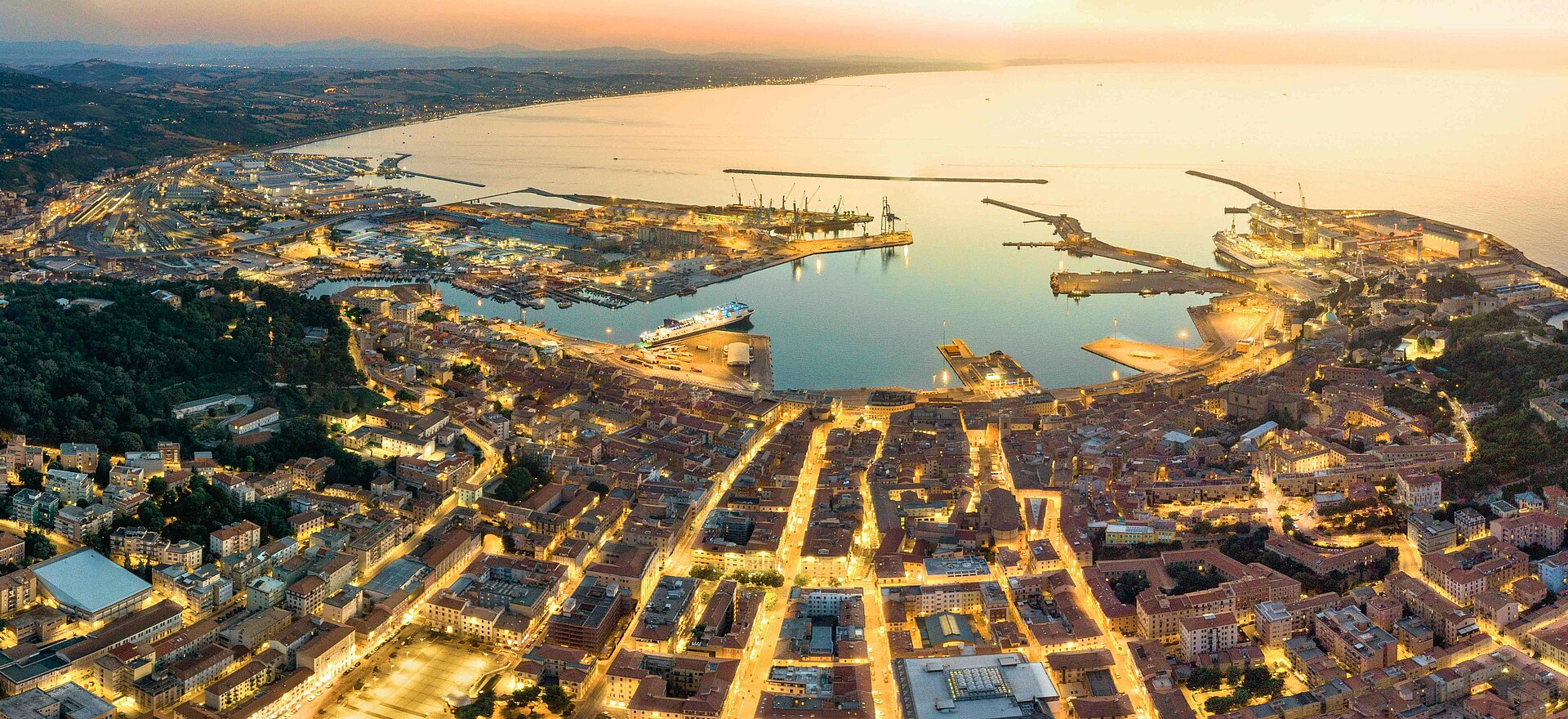


Ancona ist eine Hafenstadt mit 98.402 Einwohnern (Stand 31. Dezember 2022) an der italienischen Adriaküste. Sie ist Hauptstadt der Region Marken und der Provinz Ancona. Der Name stammt aus dem Griechischen und bedeutet Ellbogen. Ancona ist zudem Sitz des römisch-katholischen Erzbistums Ancona-Osimo.
安科纳(意大利语:Ancona)位于意大利中东部亚得里亚海畔,威尼斯南部的小都市。亦是马尔凯区和安科纳省的首府。古罗马时代起就是个繁荣的港口城市,至中世纪,安科纳经常被哥特人、伦巴第人、撒拉森人所攻打。其中在840年,全城更被撒拉森人所焚毁。在查理大帝征服了北意大利后,开始有所重建。
十二世纪被罗马教皇特许为自由都市。1532年,成为教皇国一部分。踏入19世纪,成为意大利王国一部分。到意大利统一后,为马尔凯首府。属港口城市,经常举行重要贸易展览。安科纳亦是意大利的造船中心。

 Belgium
Belgium

 History
History

 International cities
International cities
 *European Capital of Culture
*European Capital of Culture
 Olympic Summer Games
Olympic Summer Games
 Silk road
Silk road

 World Heritage
World Heritage

 Important port
Important port
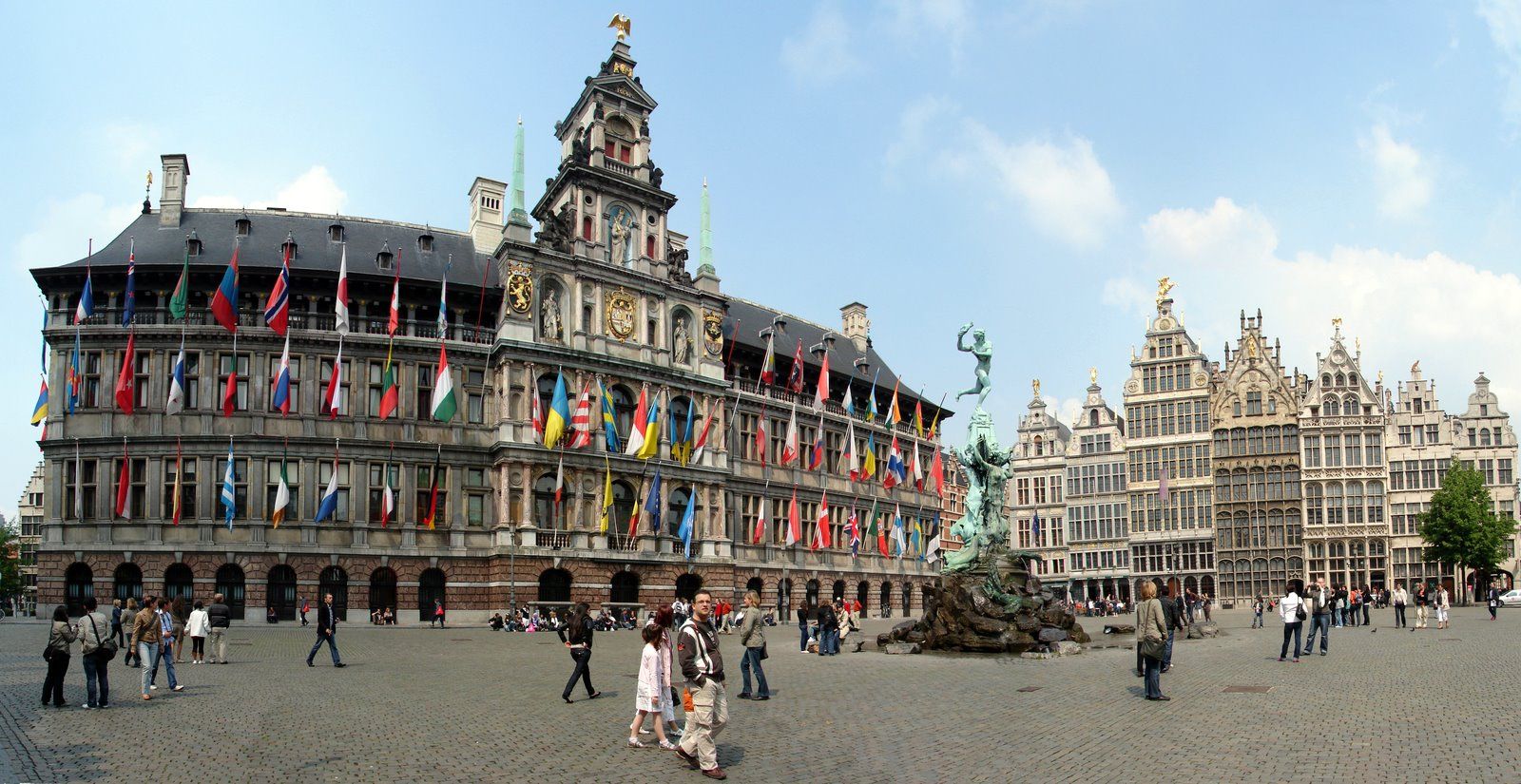
安特卫普位于比利时西北部斯海尔德河畔,是比利时最大港口和重要工业城市,面积140平方公里,人口45.7万人(2005年1月),居民大多使用荷兰地方方言,工商界主要使用法语。安特卫普是欧洲著名文化中心,是著名艺术大师罗宾斯和冯·狄克的诞生地,也是世界著名的游览城市。人们被其吸引的是它的三大看点:一是保存完好、充满中世纪情调的旧市区古老建筑;二是神秘的钻石加工和交易;三是有世界声誉的绘画艺术和众多的博物馆,建有罗宾斯故居博物馆、皇家艺术博物馆、国家海运博物馆以及钻石博物馆等。(Quelle:http://baike.baidu.com)
Antwerpen (veraltet deutsch Antorf oder Antorff, französisch Anvers) ist eine Hafenstadt in der Region Flandern in Belgien und die Hauptstadt der Provinz Antwerpen. Bezogen auf die Stadt als Verwaltungseinheit ist Antwerpen die größte Stadt des Landes. Die Agglomeration Antwerpen ist nach der Region Brüssel-Hauptstadt die zweitgrößte in Belgien.
Von großer internationaler Bedeutung ist Antwerpen durch seinen Seehafen, den zweitgrößten Europas, sowie als weltweit wichtigstes Zentrum für die Verarbeitung und den Handel von Diamanten.
Antwerpen war im 15. und 16. Jahrhundert eine der größten Städte der Welt, zeitweise die wichtigste Handelsmetropole Europas und als bedeutendes kulturelles Zentrum Wirkungsstätte von Künstlern wie Rubens. Antwerpen war Austragungsort der Olympischen Sommerspiele 1920 und Kulturhauptstadt Europas 1993. Das Druckereimuseum Plantin-Moretus, das Maison Guiette und der Turm der Liebfrauenkathedrale gehören zum UNESCO-Welterbe.
アントウェルペン(オランダ語: Antwerpen [ˈɑntʋɛrpə(n)] (![]() 音声ファイル), フランス語: Anvers [ɑ̃vɛʁ(s)], 英語: Antwerp [ˈæntwɜrp])は、ベルギーのフランデレン地域・アントウェルペン州の州都で、同国最大の都市(首都圏地域の人口を合わせればブリュッセル市が最大)。英語名に由来するアントワープや、フランス語名に由来するアンヴェルス(アンベルス)[1]も日本語の表記においてよく用いられる。2012年1月1日の総人口は502,604人。面積は204.51 km2, 人口密度は2,457.56人/km2である。
音声ファイル), フランス語: Anvers [ɑ̃vɛʁ(s)], 英語: Antwerp [ˈæntwɜrp])は、ベルギーのフランデレン地域・アントウェルペン州の州都で、同国最大の都市(首都圏地域の人口を合わせればブリュッセル市が最大)。英語名に由来するアントワープや、フランス語名に由来するアンヴェルス(アンベルス)[1]も日本語の表記においてよく用いられる。2012年1月1日の総人口は502,604人。面積は204.51 km2, 人口密度は2,457.56人/km2である。
Antwerp (/ˈæntwɜːrp/ (![]() listen), Dutch: Antwerpen [ˈɑntʋɛrpə(n)] (
listen), Dutch: Antwerpen [ˈɑntʋɛrpə(n)] (![]() listen), French: Anvers [ɑ̃vɛʁ(s)]) is a city in Belgium, and is the capital of Antwerp province in Flanders. With a population of 520,504,[2] it is the most populous city proper in Belgium. Its metropolitan area houses around 1,200,000 people, coming in second behind Brussels.[3][4]
listen), French: Anvers [ɑ̃vɛʁ(s)]) is a city in Belgium, and is the capital of Antwerp province in Flanders. With a population of 520,504,[2] it is the most populous city proper in Belgium. Its metropolitan area houses around 1,200,000 people, coming in second behind Brussels.[3][4]
Antwerp is on the River Scheldt, linked to the North Sea by the Westerschelde estuary. It is about 40 kilometres (25 mi) north of Brussels, and about 15 kilometres (9 mi) from the Dutch border. The Port of Antwerp is one of the biggest in the world, ranking second in Europe[5][6] and within the top 20 globally.[7] Antwerp was also the place of the world's oldest stock exchange building, originally built in 1531 and re-built in 1872.[8]
Antwerp has long been an important city in the Low Countries, both economically and culturally, especially before the Spanish Fury (1576) in the Dutch Revolt. The inhabitants of Antwerp are nicknamed Sinjoren ([sɪnˈjoːˌrən]), after the Spanish honorific señor or French seigneur, "lord", referring to the Spanish noblemen who ruled the city in the 17th century.[9] Today Antwerp is a major trade and cultural centre. The city hosted the 1920 Summer Olympics.
Anvers (prononcé /ɑ̃.vɛʁs/1,2, ou /ɑ̃.vɛʁ/3, en néerlandais : Antwerpen) est une ville belge dans la Région flamande, chef-lieu de la province d'Anvers et de l'arrondissement administratif du même nom, située au cœur de la Dorsale européenne.
Au 1er avril 2017, la commune d’Anvers était la plus peuplée de Belgique, devant Gand et Charleroi, avec 521 216 habitants4, 259 740 hommes et 261 476 femmes, soit une densité de 1 270,06 habitants/km2. L’agglomération anversoise compte, elle, 1 250 000 habitants. C'est la deuxième plus peuplée de Belgique, après Bruxelles. C'est également la troisième commune et ville de Belgique pour ce qui est de la superficie, avec 204,51 km2, juste après Tournai et Couvin.
Archétype de la ville bourgeoise-marchande depuis le Bas Moyen Âge elle constitue alors, selon Fernand Braudel, le centre du commerce international et de la haute finance tout au long du XVIe siècle. Anvers abrite depuis 1931 le plus vieux et unique gratte-ciel d'Europe jusqu'en 1949, la Boerentoren, et dispute à Venise l'invention de la comptabilité en partie double. Anvers est connue pour abriter les plus prestigieux diamantaires de la Planète, avec Londres et Amsterdam, ainsi que la plus importante bourse de diamants de la Planète, la Antwerpse Diamantkring. Elle abrite également une grande concentration d'établissements d'audit et consulting. Enfin, le Port d'Anvers (deuxième port commercial d'Europe en termes d'activités et de tonnage, après celui voisin de Rotterdam) joue un rôle majeur dans la mondialisation des activités économiques européennes.
Les codes postaux vont de 2000 à 2600 à l’intérieur du district de la ville d’Anvers, située principalement sur la rive droite de l’Escaut et connue pour son port international de marchandises extrêmement développé, aujourd'hui le deuxième plus grand d'Europe en termes de volume de marchandises.
Les Anversois sont aussi appelés les Sinjoren, de l’espagnol señor, héritage de l'époque où elle faisait partie de l'Empire habsbourgeois de Charles Quint. La ville est souvent appelée ’t Stad (« La Ville ») et parfois de koekenstad (« la Ville des biscuits ») par allusion aux koffiekoeken (biscuits recouverts d'un fin glaçage au café) d’Anvers, réputées dans toute la Belgique.
Anversa (Antwerpen in olandese, Anvers in francese) è una città di 506.922 abitanti del Belgio settentrionale, la più importante nella regione delle Fiandre, una delle tre regioni dello Stato, e il capoluogo della provincia omonima.
Amberes (en neerlandés, Antwerpen ![]() [ˈɑntˌʋɛrpə(n)] (?·i), en francés, Anvers [ɑ̃ˈvɛʁ(s)]), antiguamente conocida como Antuerpia, es una ciudad situada en Bélgica que posee 521.600 habitantes en 2018. El área metropolitana cubre 1.449 km² (559 millas cuadradas) con un total de 2.190.769 habitantes, según el censo del 1 de enero de 2017.
[ˈɑntˌʋɛrpə(n)] (?·i), en francés, Anvers [ɑ̃ˈvɛʁ(s)]), antiguamente conocida como Antuerpia, es una ciudad situada en Bélgica que posee 521.600 habitantes en 2018. El área metropolitana cubre 1.449 km² (559 millas cuadradas) con un total de 2.190.769 habitantes, según el censo del 1 de enero de 2017.
Антве́рпен (нидерл. Antwerpen [ˈɑntˌʋɛrpə(n)], фр. Anvers [ɑ̃vɛʁs], з.-флам. Antwerpn) — город во Фламандском регионе Бельгии. Второй (после Брюсселя) город страны, самый большой город Фландрии. Административный центр провинции Антверпен. Город расположен на обоих берегах реки Шельды. Морской порт, входит в двадцатку крупнейших портов мира и является вторым в Европе после порта города Роттердама в Нидерландах[2].


 Eurovision Song Contest,ESC
Eurovision Song Contest,ESC

 History
History
 Greece
Greece

 International cities
International cities
 *European Capital of Culture
*European Capital of Culture
 Olympic Summer Games
Olympic Summer Games
 Silk road
Silk road

 World Heritage
World Heritage

 Important port
Important port
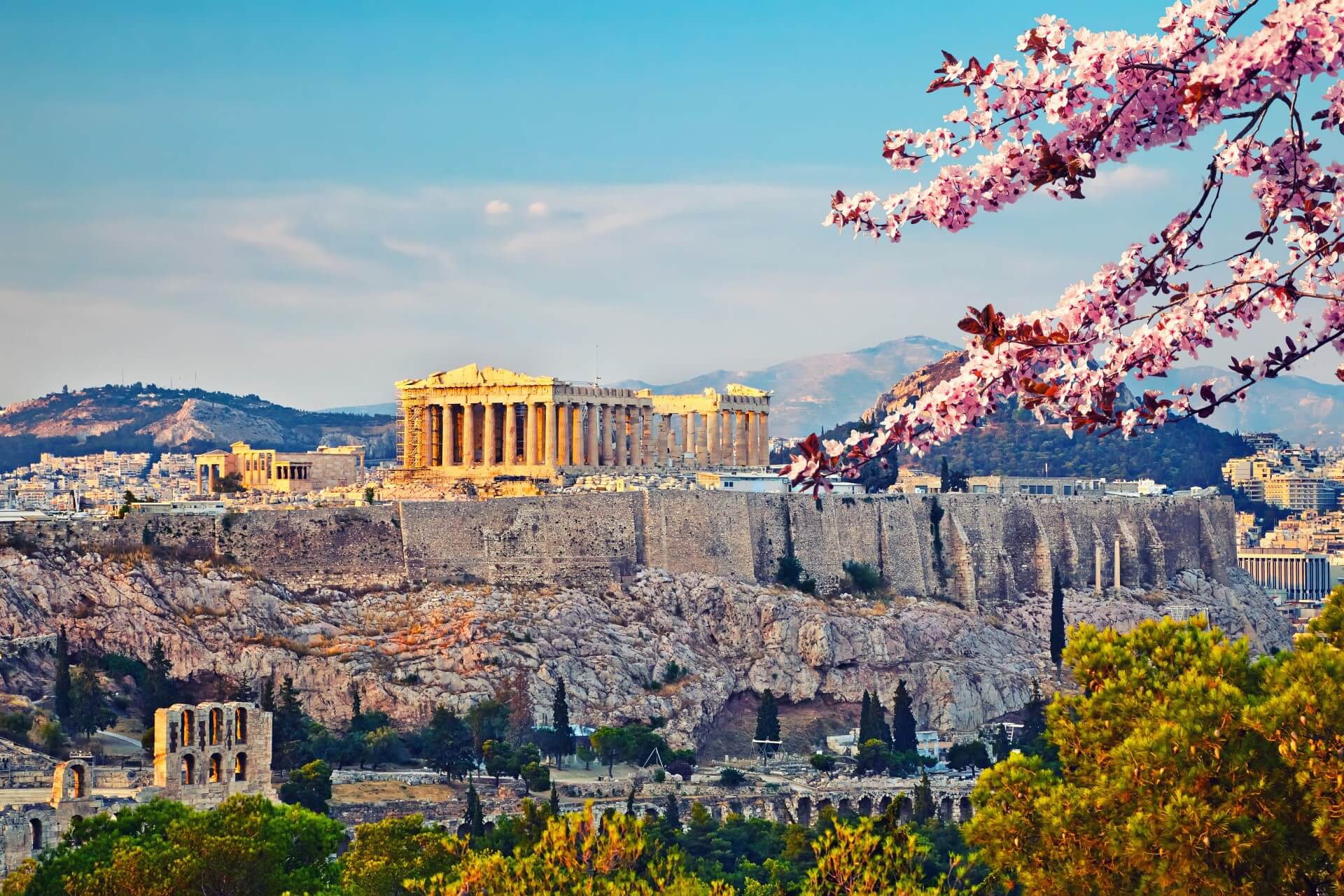
雅典建城至今已经有5000多年的历史,公元前8世纪,爱奥尼亚人建成的雅典是古希腊城邦的盟主。古代雅典是西方文化的源泉,雅典人对艺术、哲学、法律、科学作出了杰出的贡献。公元前5世纪为雅典的鼎盛时期,出现了许多不朽的大师。大悲剧家欧里庇德斯、大喜剧家阿里斯托芬、哲学家苏格拉底、柏拉图、亚里斯多德、历史学家希罗多德等都在这里诞生或居住过,这些光辉的名字照耀着人类文化的黎明。
雅典是希腊的古文物中心,至今仍保存着很多古代文化遗址,如今仍能显出当年的雄伟气概。雅典的博物馆世界驰名。
跨越时空两千五百年正是雅典给人的感觉,山丘上的卫城是西元前五百年的伟大艺术杰作,而山下的波拉卡区千年来就是一本希腊人的生活宝库,而身为希腊的首都及最大的城市,雅典的现代化建筑,拥挤的交通和空气污染严重,又和世界一般大都会无异。
现在雅典是全世界旅游爱好者的度假胜地。蔚蓝的爱琴海边涛声依旧,雅典的一砖一砾都闪烁着人类文明的光辉。 (Quelle:http://eur.bytravel.cn)
雅典(希腊语:Αθήνα,Athína,[aˈθina];古希腊语:Άθῆναι,转写:Athēnai)是希腊首都,也是希腊最大的城市。雅典位于巴尔干半岛南端,三面环山,一面傍海,西南距爱琴海法利龙湾8公里,属亚热带地中海气候。基菲索斯河和伊利索斯河穿城而过。市内多小山。
雅典是世界上最老的城市之一,有记载的历史就长达3000多年。现在雅典是欧洲第八大城市[1]。雅典是希腊经济、财政、工业、政治和文化中心。雅典也是欧盟商业中心之一。市区人口330万,加上郊区人口共有380万人口。城市的面积为39平方公里,加上郊区为412平方公里。[2]
古雅典是一个强大的城邦,是驰名世界的文化古城。希腊是西方哲学的摇篮,是柏拉图学院和亚里士多德的讲学场所的所在地。[3][4]苏格拉底、希罗多德、伯里克利、索福克勒斯、阿里斯托芬、欧里庇得斯、埃斯库罗斯和其他著名的哲学家、政治家和文学家都在雅典诞生或居住过[5],雅典也因此被称作“西方文明的摇篮”和民主的起源地。[6]公元前5世纪和4世纪在文化和政治上的成就对欧洲及世界文化产生重大影响。[7]
雅典至今仍保留了很多历史遗迹和大量的艺术作品,其中最著名的是雅典卫城的帕提农神庙,是西方文化的象征。
雅典是现代奥运会起源的地方。1896年曾举办过第一届夏季奥运会。2004年,第二十八届夏季奥林匹克运动会在雅典举行。Athen – neugriechisch Αθήνα [aˈθina] (f. sg.), Katharevousa und altgriechisch Ἀθῆναι Athênai (f. pl.) – ist die Hauptstadt Griechenlands. Athen ist die bevölkerungsreichste und flächengrößte Stadt des Landes. Die Gemeinde Athen im Zentrum des Ballungsraums Athen-Piräus ist dabei relativ klein. Athen im weiteren Sinne umfasst das Gebiet der Regionalbezirke Athen-Zentrum (87,3 km²), Athen-Nord (138,79 km²), Athen-Süd (68,9 km²), Athen-West (66,8 km²) und einiger umliegender Vororte mit zusammen 3,753 Mio. Einwohnern.[2]
Als kulturelles, historisches und wirtschaftliches Zentrum des Landes ist Athen auch die bedeutendste Metropole Griechenlands. Der Flughafen ist der wichtigste des Landes und der acht Kilometer vom Athener Zentrum entfernte Hafen Piräus der größte Griechenlands. Von hier und vom kleineren Rafina wird auch der Schiffsverkehr zu den zahlreichen griechischen Inseln abgefertigt. Im Schienenverkehr hat Athen nationale, jedoch keine internationale Bedeutung.
Die Stadt ist seit der Jungsteinzeit kontinuierlich besiedelt[3] und damit eine der ältesten Siedlungen und Städte Europas. 1985 wurde Athen erste Kulturhauptstadt Europas. In die Liste des Weltkulturerbes der UNESCO wurde 1987 die Akropolis und 1990 das Kloster Daphni aufgenommen.
Athen war in der klassischen Zeit Ort der attischen Polis. Die in dieser Zeit (5. Jahrhundert v. Chr.) entstandene attische Demokratie gilt als Begründerin einer auf dem Prinzip der Volkssouveränität gegründeten politischen Ordnung.
アテネ(現代ギリシア語: Αθήνα; Athína; IPA: [aˈθina]; カサレヴサ: Ἀθῆναι, Athinai; 古代ギリシア語: Ἀθῆναι, Athēnai)は、ギリシャ共和国の首都で同国最大の都市である。
アテネはアッティカ地方にあり、世界でももっとも古い都市の一つで約3,400年の歴史がある。古代のアテネであるアテナイは強力な都市国家であったことで知られる。芸術や学問、哲学の中心で、プラトンが創建したアカデメイアやアリストテレスのリュケイオン[1][2]があり、西洋文明の揺籃や民主主義の発祥地として広く言及されており[3][4]、その大部分は紀元前4-5世紀の文化的、政治的な功績により後の世紀にヨーロッパに大きな影響を与えたことは知られている。[5]今日の現代的なアテネは世界都市としてギリシャの経済、金融、産業、政治、文化生活の中心である。2008年にアテネは世界で32番目に富める都市に位置し[6]、UBSの調査では25番目に物価が高い都市[7]に位置している。
アテネ市の人口は655,780人[8](2004年は796,442人)[9]、市域面積は39 km2 (15 sq mi)[10]である。アテネの都市的地域(大アテネや大ピラエウス)は市域を超えて広がっており、人口は2011年現在3,074,160人に達し[11]、都市的地域の面積は412 km2 (159 sq mi)[10]である。ユーロスタットによれば大都市圏地域(Larger Urban Zones,LUZ) (en) の人口は欧州連合域内では7番目に大きい。
古典ギリシアの文化的遺産は今でもはっきりとしており、多くの古代遺跡や芸術作品が象徴している。もっとも有名で代表的なものにはパルテノン神殿があり初期の西洋文明の鍵となるランドマークと見なされる場合もある。アテネにはローマ帝国支配下のギリシャやビザンティンの遺跡もあり同様に少数のオスマン帝国の遺跡も残されているなど、何世紀にもわたる長い歴史を投影するモニュメントとなっている。アテネには2つのユネスコの世界遺産がありアテナイのアクロポリスと中世のダフニ修道院がそうである。現代のランドマークはギリシアが1833年に独立国となりアテネが首都に制定された時のもので、ギリシャ議会の議事堂や3部作(Trilogy )で構成されたギリシア国立図書館、アテネ大学、アテネアカデミーが含まれる。アテネは、最初の近代オリンピックであるアテネオリンピックと、その108年後に開催されたアテネオリンピック (2004年)の2度のオリンピックの舞台である。[12]アテネにはアテネ国立考古学博物館があり、世界最大の古代ギリシアの遺品の収蔵を特徴とし新しい2008年に完成したアクロポリス博物館もある。ギリシャ正教会の首長であるアテネ大主教が所在し、精神的な中心地でもある。(ギリシャ正教会は正教会に属し、クレタ島を除くギリシャ一国を管轄する。)正教会の定めるアテネの守護聖人は、ディオニシオス・オ・アレオパギティス、イェロテオス、フィロセイ。1985年には欧州文化首都に選ばれた。
Athens (/ˈæθɪnz/;[3] Greek: Αθήνα, Athína [aˈθina]; Ancient Greek: Ἀθῆναι, Athênai [a.tʰɛ̂ː.nai̯]) is the capital and largest city of Greece. Athens dominates the Attica region and is one of the world's oldest cities, with its recorded history spanning over 3,400 years[4] and its earliest human presence starting somewhere between the 11th and 7th millennium BC.[5]
Classical Athens was a powerful city-state that emerged in conjunction with the seagoing development of the port of Piraeus, which had been a distinct city prior to its 5th century BC incorporation with Athens. A centre for the arts, learning and philosophy, home of Plato's Academy and Aristotle's Lyceum,[6][7] it is widely referred to as the cradle of Western civilization and the birthplace of democracy,[8][9] largely because of its cultural and political impact on the European continent, and in particular the Romans.[10] In modern times, Athens is a large cosmopolitan metropolis and central to economic, financial, industrial, maritime, political and cultural life in Greece. In 2012, Athens was ranked the world's 39th richest city by purchasing power[11] and the 67th most expensive[12] in a UBS study.
Athens is a global city and one of the biggest economic centres in southeastern Europe. It has a large financial sector, and its port Piraeus is both the largest passenger port in Europe,[13][14][15][16] and the second largest in the world.[17][dead link] The Municipality of Athens (also City of Athens) had a population of 664,046 (in 2011)[2] within its administrative limits, and a land area of 38.96 km2 (15.04 sq mi).[18][19] The urban area of Athens (Greater Athens and Greater Piraeus) extends beyond its administrative municipal city limits, with a population of 3,090,508 (in 2011)[20] over an area of 412 km2 (159 sq mi).[19] According to Eurostat[21] in 2011, the functional urban area (FUA) of Athens was the 9th most populous FUA in the European Union (the 6th most populous capital city of the EU), with a population of 3.8 million people. Athens is also the southernmost capital on the European mainland.
The heritage of the classical era is still evident in the city, represented by ancient monuments and works of art, the most famous of all being the Parthenon, considered a key landmark of early Western civilization. The city also retains Roman and Byzantine monuments, as well as a smaller number of Ottoman monuments. Athens is home to two UNESCO World Heritage Sites, the Acropolis of Athens and the medieval Daphni Monastery. Landmarks of the modern era, dating back to the establishment of Athens as the capital of the independent Greek state in 1834, include the Hellenic Parliament and the so-called "architectural trilogy of Athens", consisting of the National Library of Greece, the National and Kapodistrian University of Athens and the Academy of Athens. Athens is also home to several museums and cultural institutions, such as the National Archeological Museum, featuring the world's largest collection of ancient Greek antiquities, the Acropolis Museum, the Museum of Cycladic Art, the Benaki Museum and the Byzantine and Christian Museum. Athens was the host city of the first modern-day Olympic Games in 1896, and 108 years later it welcomed home the 2004 Summer Olympics, making it one of only a handful of cities to have hosted the Olympics more than once.[22]
Athènes (en grec ancien Ἀθῆναι / Athễnai — le nom est toujours pluriel —, en grec moderne Αθήνα [a'θina] / Athína) est la capitale et la plus grande ville de la Grèce. En 2011, elle compte 664 046 habitants intra-muros sur une superficie de 39 km2. Son aire urbaine, le Grand Athènes, qui comprend notamment le port du Pirée, en compte plus de 3 millions. Berceau de la civilisation occidentale et dotée d'un riche passé, la ville est aujourd'hui le cœur politique, économique et culturel de la République hellénique, dont elle accueille la plupart des institutions, comme le Parlement, l'Áreios Págos (cour suprême) et le siège du Gouvernement.
Athènes est l'une des plus anciennes villes au monde, avec une présence humaine attestée dès le Néolithique. Fondée vers -800 autour de la colline de l'Acropole — par le héros Thésée, selon la légende —, la cité domine la Grèce au cours du Ier millénaire av. J.‑C.. Elle connaît son âge d'or au Ve siècle av. J.-C., sous la domination du stratège Périclès : principale puissance militaire de Grèce, à la tête d'une vaste alliance de cités, elle est également le cœur culturel de la Méditerranée. Première république de l'histoire, la démocratie athénienne connaît une vie intellectuelle importante, rassemblant des philosophes antiques (Socrate, Platon, Aristote), des auteurs de théâtre (Eschyle, Sophocle, Euripide, Aristophane) et l'historien Thucydide. De nombreux témoignages de cette période faste ont été conservés, comme le Parthénon, l'Agora (qui comprend notamment le temple d'Héphaïstos), l'Olympéion, le théâtre de Dionysos ou encore le Stade panathénaïque.
Intégrée au royaume de Macédoine, puis à l'Empire byzantin — période durant laquelle fut bâti le monastère de Daphni —, Athènes est conquise par l'Empire ottoman en 1456 et reste sous sa domination jusqu'en 1822, année de l'indépendance de la Grèce. Elle en devient la capitale et connaît une importante croissance urbaine. Occupée lors des deux guerres mondiales, la ville est ravagée par les destructions de la guerre civile grecque (1946 – 1949). Durant la seconde moitié du XXe siècle, Athènes devient le cœur économique et universitaire d'une Grèce en plein développement, dont les symboles sont les grandes avenues commerçantes telles que l'avenue Kifissias ou l'avenue Vasilissis Sofias. Frappée de plein fouet par la crise grecque depuis 2009, la ville a perdu plusieurs dizaines de milliers d'habitants et fait face à d'importantes difficultés économiques.
La ville s'étend sur la plaine d'Attique, sur les rives de la mer Égée. Elle est le chef-lieu du district régional d'Athènes-Centre et la capitale de la périphérie d'Attique, mais aussi celle du diocèse décentralisé du même nom. Le quartier le plus ancien, Pláka, est situé en contrebas de l'Acropole et comprend notamment la place Monastiráki. Kolonáki est le quartier huppé, à proximité de la place Syntagma. Enfin, Exárcheia est le quartier alternatif et branché de la ville, foyer de l'anarchisme en Grèce et de la contestation populaire depuis la crise. Grâce à son climat méditerranéen et ses nombreux musées, comme le musée de l'Acropole ou le musée national archéologique, Athènes est l'une des principales destinations touristiques d'Europe. Elle a également accueilli les Jeux olympiques d'été en 1896 et en 2004.
Atene (AFI: /aˈtɛne/[2]; in greco Αθήνα, traslitterato in Athína; in greco antico: Ἀθῆναι, Athḕnai)[3] è un comune greco di 655 780 abitanti,[1] capitale della Repubblica Ellenica, capoluogo dell'unità periferica di Atene Centrale e della periferia dell'Attica.
Il comune di Atene, stricto sensu, ha una superficie di 39 km², ma l'area metropolitana intesa come Grande Atene[4] ha un'estensione di 412 km² con 4 013 368 abitanti, ed è così la settima conurbazione più grande dell'Unione europea, e la quinta capitale più popolosa dell'Unione.[5]
Atene è una metropoli cosmopolita ed è il centro economico, finanziario, industriale e culturale della Grecia, e ha una notevole importanza a livello europeo, ma anche mondiale.[6] Nel 2012 è stata classificata come la 39ª città più ricca del mondo per potere d'acquisto[7] e come la 77ª più costosa[8] in una ricerca effettuata dalla società svizzera UBS.
È nota in tutto il mondo per la nascita della democrazia, per essere stata la sede dell'accademia di Platone e del liceo di Aristotele, oltre che aver dato i natali a Socrate, Pericle, Sofocle e molti altri filosofi e personaggi importanti dell'antichità. Tra le città più antiche del mondo,[9] è stata una fiorente polis ed è considerata la culla della civiltà occidentale.[10] Nel XXI secolo è stata al centro dell'attenzione di tutto il mondo per aver organizzato con successo i Giochi della XXVIII Olimpiade nel 2004 e per l'inaugurazione del Nuovo Museo dell'Acropoli nel 2009, che ha riaperto il dibattito riguardante i Marmi del Partenone.
Dall'aprile 2018 all'aprile 2019, Atene sarà capitale mondiale del libro.[11]
La città è anche la sede del Santo Sinodo della Chiesa di Grecia, presso il Monastero di Petraki.
Tradizionalmente la protettrice della città è la dea Atena, raffigurata sia sullo stemma che sulla bandiera della città.
Atenas (griego antiguo: Ἀθῆναι, romanización: Athēnai, griego moderno: Αθήνα, romanización: Athína) es la capital de Grecia y actualmente la ciudad más grande del país. La población del municipio de Atenas es de 664 046 (en 2011), pero su área metropolitana es mucho mayor y comprende una población de 3,8 millones (en 2011). Es el centro principal de la vida económica, cultural y política griega.
La historia de Atenas se extiende más de tres mil años, lo que la convierte en una de las ciudades habitadas más antiguas. Durante la época clásica de Grecia, fue una poderosa ciudad estado que nació junto con el desarrollo de la navegación marítima del puerto de El Pireo y que tuvo un papel fundamental en el desarrollo de la democracia. También fue un centro cultural donde vivieron muchos de los grandes artistas, escritores y filósofos de la Antigüedad. Estas contribuciones de Atenas al pensamiento de su época tuvieron una gran influencia en el desarrollo de Grecia, de Roma y de la cultura occidental.
Atenas es una ciudad rica en restos arqueológicos de extraordinaria importancia, de los cuales el más famoso es el Partenón en la Acrópolis. Además de construcciones de la época clásica griega, también se conservan monumentos romanos y bizantinos, así como varias construcciones modernas notables.
Афи́ны (греч. Αθήνα, МФА: [aˈθina]) — столица Греции. Располагается в исторической области Аттика и является экономическим, культурным и административным центром страны. Город назван в честь богини войны и мудрости Афины, которая была покровителем древнего полиса. Афины имеют богатую историю; в классический период (V век до н. э.) город-государство достигло вершины своего развития, определив многие тенденции развития позднейшей европейской культуры. Так, с городом связаны имена философов Сократа, Платона и Аристотеля, заложивших основы европейской философии, трагиков Эсхила, Софокла и Еврипида, стоявших у истоков драмы; политическим строем древних Афин была демократия.
Площадь территории городской агломерации — 412 км². Эта территория окружена горами: Эгалео, Парнис, Пенделикон и Имитос. Общая численность населения городской агломерации составляет 1/3 от общей численности населения Греции и составляет, в соответствии с переписью 2011 года, 3 090 508 человек. Таким образом плотность населения городской агломерации — 7500 человек на 1 км². Высота центра города над уровнем моря составляет 20 метров, в то время как рельеф территории города очень разнообразен, с равнинами и горами.
 Women's Soccer World Cup 2023
Women's Soccer World Cup 2023

 Geography
Geography

 Geography
Geography
 *World's Most Livable Cities
*World's Most Livable Cities
 ITU World Championship Series
ITU World Championship Series
 New Zealand
New Zealand

 Sport
Sport
 Triathlon
Triathlon

 Sport
Sport
 The Ocean Race
The Ocean Race

 Important port
Important port
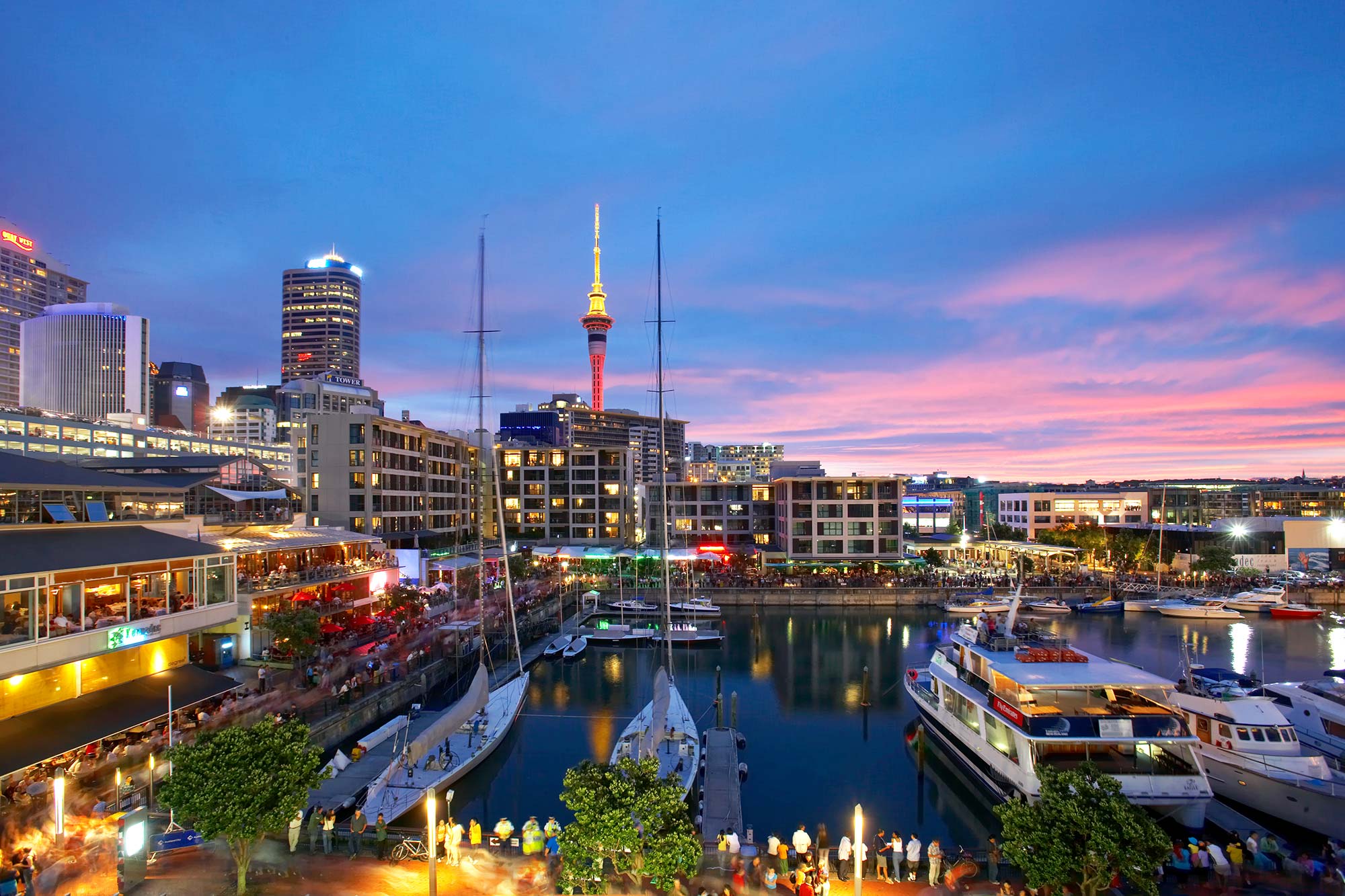
奥克兰(英语:Auckland;毛利语:Tāmaki Makaurau 或 Ākarana),老华侨译作屋仑[1] ,是新西兰的一个都会区,为新西兰人囗最多的城市,也是北岛最大的城市。人口约150万,聚居了全国约32%的人口,[2]也是世界上波利尼西亚人最多的城市。[3]奥克兰被称为“帆之都”,同时也是新西兰工业和商业中心。
新西兰的首都早先设在奥克兰,后来于1865年迁至北岛南端的惠灵顿 。现今的奥克兰仍然为新西兰最发达的地区之一,同时也是南太平洋的枢纽,旅客出入境的主要地点。在2014年的世界最佳居住城市评选中,奥克兰高居全球第三位。[4]在2021年的世界最佳居住城市评选中,奥克兰排名全球榜首。[5]奥克兰因其在商业,艺术和教育方面的重要性而被GaWC归类为Beta+世界城市。
Auckland [ˈɔːklənd], offizielle Bezeichnung Auckland Council, auf Māori: Tāmaki Makaurau oder Ākarana, ist eine Großstadt und zugleich Unitary Authority auf der Nordinsel von Neuseeland. Mit über 1,4 Millionen Einwohnern ist sie die größte Stadt Neuseelands, in der etwa ein Drittel der neuseeländischen Bevölkerung lebt.[4] Die Māori-Bezeichnung Tāmaki Makaurau bedeutet „Eine junge Schönheit mit 100 Liebhabern“, während Ākarana eine an den Lautstand des Māori angepasste Version von „Auckland“ ist.[5]
Das landschaftliche Bild des multikulturellen Auckland wird von 53 inaktiven Vulkanen geprägt, zwischen denen sich die Großstadt erstreckt.[6] Ihnen verdankt die Stadt weitläufige Parkanlagen, die bis ins Zentrum hineinreichen. Die Lage an geschützten Meeresbuchten trägt ebenfalls wesentlich zum Bild Aucklands bei, nicht zuletzt durch die zahlreichen Segelboote, die der Stadt den Beinamen City of Sails einbrachte.
Zum 1. November 2010 wurde aus dem Ballungsraum Auckland (englisch: Greater Auckland bzw. Auckland Metropolitan Area), mit den bis dahin verwaltungstechnisch eigenständigen Städten Auckland City, Manukau City, North Shore City und Waitakere City, den Distrikten Franklin District, Papakura District und Rodney District und dem Auckland Regional Council, der Auckland Council gebildet, der, wie geplant, die Probleme des Großraums Auckland aus einer einheitlichen und zentral organisierten Verwaltungsstruktur heraus lösen soll. Der Auckland Council wurde per Kommunalwahl vom 9. Oktober 2010 politisch legitimiert und fasst seitdem alle vorherigen Verwaltungseinheiten unter der Regierung von einem Bürgermeister und 20 Stadträten zusammen.
In einer Rangliste der Städte mit der höchsten Lebensqualität weltweit belegte Auckland im Jahre 2018 den dritten Platz.



曼谷(法语:Bangkok),官方名字功特玛哈那空[2](泰语:กรุงเทพมหานคร,转写:krung deːb mahaː nagara,皇家拉丁音译:Krung Thep Maha Nakhon,国际音标:[krūŋ tʰêːp mahǎː nákʰɔ̄ːn] 聆听 帮助·信息),泰国口语简称功特[2](泰语:กรุงเทพ,皇家拉丁音译:Krung Thep,国际音标:[krūŋ tʰêːp],
聆听 帮助·信息),泰国口语简称功特[2](泰语:กรุงเทพ,皇家拉丁音译:Krung Thep,国际音标:[krūŋ tʰêːp], 聆听 帮助·信息),是泰国首都与最大城市,在当地华人社区亦作泰京,为泰国政治、经济、贸易、交通、文化、科技、教育与各方面中心。位于昭披耶河东岸,近泰国湾。
聆听 帮助·信息),是泰国首都与最大城市,在当地华人社区亦作泰京,为泰国政治、经济、贸易、交通、文化、科技、教育与各方面中心。位于昭披耶河东岸,近泰国湾。
Bangkok (thailändisch กรุงเทพมหานคร, Krung Thep Maha Nakhon, [kruŋ tʰêːp máʔhǎː náʔkʰɔːn],  anhören?/i; kurz กรุงเทพฯ, Krung Thep, [kruŋ tʰêːp]; historische Schreibung zum Teil auch Bankok[2]) ist seit 1782 die Hauptstadt des Königreichs Thailand. Sie hat einen Sonderverwaltungsstatus und wird von einem Gouverneur regiert. Die Hauptstadt hat 8,249 Millionen Einwohner (Volkszählung 2010) und ist die mit Abstand größte Stadt des Landes. In der Bangkok Metropolitan Region (BMR), der größten Metropolregion in Thailand, leben insgesamt 14,566 Millionen Menschen (Volkszählung 2010).[1]
anhören?/i; kurz กรุงเทพฯ, Krung Thep, [kruŋ tʰêːp]; historische Schreibung zum Teil auch Bankok[2]) ist seit 1782 die Hauptstadt des Königreichs Thailand. Sie hat einen Sonderverwaltungsstatus und wird von einem Gouverneur regiert. Die Hauptstadt hat 8,249 Millionen Einwohner (Volkszählung 2010) und ist die mit Abstand größte Stadt des Landes. In der Bangkok Metropolitan Region (BMR), der größten Metropolregion in Thailand, leben insgesamt 14,566 Millionen Menschen (Volkszählung 2010).[1]
Die Stadt ist das politische, wirtschaftliche und kulturelle Zentrum Thailands mit Universitäten, Hochschulen, Palästen und über 400 Wats (buddhistische Tempelanlagen und Klöster) sowie wichtigster Verkehrsknotenpunkt des Landes. In Bangkok ist auch die Wirtschafts- und Sozialkommission für Asien und den Pazifik (UNESCAP) beheimatet. Mit mehr als 17 Millionen ausländischen Touristen war Bangkok im Jahr 2013 die meistbesuchte Stadt der Welt, bevor sie 2014 wieder von London abgelöst wurde und seither auf Platz 2 rangiert.[3] Seit 2016 steht Bangkok mit über 20 Millionen Touristen jährlich auf Platz 1 der meistbesuchten Städte der Welt.
バンコク都(バンコクと、フランス語: Bangkok,[bāːŋ kɔ̀ːk], 聴く[ヘルプ/ファイル])正式名称クルンテープマハーナコーン(กรุงเทพมหานคร,[krūŋ tʰêːp mahǎː nákʰɔ̄ːn])は[1]、タイ王国の首都。タイでは、クルンテープ(กรุงเทพ,[krūŋ tʰêːp],
聴く[ヘルプ/ファイル])正式名称クルンテープマハーナコーン(กรุงเทพมหานคร,[krūŋ tʰêːp mahǎː nákʰɔ̄ːn])は[1]、タイ王国の首都。タイでは、クルンテープ(กรุงเทพ,[krūŋ tʰêːp], 聴く[ヘルプ/ファイル])の通称で呼ばれている[2]。
聴く[ヘルプ/ファイル])の通称で呼ばれている[2]。
人口8,249,117人(2010年)、面積1568.737 km2。都市圏人口は2018年時点で1600万人を超えており、世界有数の大都市圏を形成している[3]。ASEAN経済の中心地で、東南アジア屈指の世界都市でもある。
タイの王宮や政治の中枢機関が集中しているだけでなく、交通と宿泊施設の整ったバンコクは多くの各国要人を招き、アジアで2番目に多くの国際会議が開かれる都市であり[4]、政治的に多大な影響力を持つ。
Bangkok,[a] officially known in Thai as Krung Thep Maha Nakhon[b] and colloquially as Krung Thep,[c] is the capital and most populous city of Thailand. The city occupies 1,568.7 square kilometres (605.7 sq mi) in the Chao Phraya River delta in central Thailand and has an estimated population of 10.539 million as of 2020, 15.3 percent of the country's population. Over 14 million people (22.2 percent) lived within the surrounding Bangkok Metropolitan Region at the 2010 census, making Bangkok an extreme primate city, dwarfing Thailand's other urban centres in both size and importance to the national economy.
Bangkok traces its roots to a small trading post during the Ayutthaya Kingdom in the 15th century, which eventually grew and became the site of two capital cities, Thonburi in 1768 and Rattanakosin in 1782. Bangkok was at the heart of the modernization of Siam, later renamed Thailand, during the late-19th century, as the country faced pressures from the West. The city was at the centre of Thailand's political struggles throughout the 20th century, as the country abolished absolute monarchy, adopted constitutional rule, and underwent numerous coups and several uprisings. The city, incorporated as a special administrative area under the Bangkok Metropolitan Administration in 1972, grew rapidly during the 1960s through the 1980s and now exerts a significant impact on Thailand's politics, economy, education, media and modern society.
The Asian investment boom in the 1980s and 1990s led many multinational corporations to locate their regional headquarters in Bangkok. The city is now a regional force in finance and business. It is an international hub for transport and health care, and has emerged as a centre for the arts, fashion, and entertainment. The city is known for its street life and cultural landmarks, as well as its red-light districts. The Grand Palace and Buddhist temples including Wat Arun and Wat Pho stand in contrast with other tourist attractions such as the nightlife scenes of Khaosan Road and Patpong. Bangkok is among the world's top tourist destinations, and has been named the world's most visited city consistently in several international rankings.
Bangkok's rapid growth coupled with little urban planning has resulted in a haphazard cityscape and inadequate infrastructure. Despite an extensive expressway network, an inadequate road network and substantial private car usage have led to chronic and crippling traffic congestion, which caused severe air pollution in the 1990s. The city has since turned to public transport in an attempt to solve the problem, operating five rapid transit lines and building other public transit, but congestion still remains a prevalent issue. The city faces long-term environmental threats such as sea level rise due to climate change.
Bangkok (thaï : กรุงเทพมหานคร, Krungthep Mahanakhon) est la capitale de la Thaïlande. La ville a également le statut de province.
La ville occupe une superficie de 1 569 km2 dans le delta du fleuve Chao Phraya en Thaïlande centrale et son nombre d’habitants est supérieur à 9 millions, plus de 19 millions de personnes habitent l’aire métropolitaine de la capitale, soit plus que tous les autres centres urbains du pays.
Les racines de Bangkok remontent à un petit comptoir commercial créé durant le Royaume d’Ayutthaya au xve siècle au bord du fleuve Chao Phraya qui prend de l’importance avant de devenir le site d’une première capitale, Thonburi, en 1768. Mais la date officielle de sa fondation par Rama Ier, premier roi de la dynastie Chakri, est le 6 avril 1782, sur l’autre rive du fleuve. Bangkok s’inscrit au xixe siècle au cœur du mouvement de modernisation du royaume de Siam, alors que le pays subit la pression des nations colonisatrices européennes. La ville est ensuite au xxe siècle le théâtre de l’évolution politique de la Thaïlande, notamment avec l’abolition de la monarchie absolue, l’adoption d’une constitution, et plusieurs soubresauts politiques parfois violents. La ville a connu une formidable croissance à partir des années 1960 et exerce aujourd’hui une influence centrale sur la vie politique, économique, culturelle, universitaire et médiatique de la Thaïlande1.
Le boom économique asiatique des années 1980 et 1990 a amené beaucoup d’entreprises multinationales à installer leur siège régional à Bangkok. La ville est un important pôle d’affaires. C’est également une plateforme internationale pour les transports et la santé, tout comme pour les arts, la mode, les spectacles et le tourisme. Bangkok fait partie des villes les plus visitées au monde.
Bangkok (in thailandese: บางกอก?), in thai ufficialmente denominata Krung Thep Maha Nakhon o Krung Thep (in thailandese: กรุงเทพมหานคร?, กรุงเทพฯ; pronuncia[?·info]), è la capitale e la città più estesa e popolosa della Thailandia, situata lungo il fiume Chao Phraya, nei pressi del golfo della Thailandia. Secondo il censimento del 2010, aveva una popolazione di oltre 8,3 milioni di abitanti, pari al 12,6% del totale del paese, mentre erano oltre 14,6 milioni (22,2%) quelli che vivevano nella regione metropolitana, che comprende anche le province circostanti.[1] Tra le città più popolose e trafficate del mondo,[2] nonché una delle destinazioni preferite del turismo mondiale, a partire dalla seconda metà del XX secolo ha conosciuto un rapidissimo sviluppo industriale, rappresentando una delle città economicamente più dinamiche del sud-est asiatico.
Bangkok u oficialmente Krung Thep Mahanakhon ([bāːŋ kɔ̀ːk] en tailandés, กรุงเทพมหานคร o กรุงเทพ  [krūŋ tʰêːp mahǎː nákʰɔ̄ːn] (?·i), RTGS: Krung Thep Mahanakhon traducido como «La ciudad de los ángeles»)1 es la capital y ciudad principal de Tailandia.2 Aunque el nombre oficial de la capital no es Bangkok, es comúnmente empleado internacionalmente para referirse a la ciudad.3
[krūŋ tʰêːp mahǎː nákʰɔ̄ːn] (?·i), RTGS: Krung Thep Mahanakhon traducido como «La ciudad de los ángeles»)1 es la capital y ciudad principal de Tailandia.2 Aunque el nombre oficial de la capital no es Bangkok, es comúnmente empleado internacionalmente para referirse a la ciudad.3
Bangkok significa «aldea de la ciruela silvestre» y es el nombre de una parte del lado del río Thon Buri. Así pues, Bangkok es conocida como Krung Thep Mahanakhon. Fue un pequeño puesto de comercio en la desembocadura del río Chao Phraya durante el reino de Ayutthaya. Llegó al primer plano de Siam, cuando recibió el estatus de ciudad capital en 1768 después de la quema de Ayutthaya.4 Sin embargo el actual reino Rattanakosin no comenzó hasta 1782 cuando Rama I trasladó la capital a la isla de Rattanakosin, después de la muerte del rey Taksin. La capital de Rattanakosin es ahora formalmente llamada "Phra Nakhon" (en tailandés: พระนคร), perteneciente a los antiguos límites en el núcleo de la metrópolis y el nombre de Bangkok incorpora la acumulación urbana desde el siglo XVIII, con su propia administración pública y gobernador.
Durante los últimos doscientos años Bangkok ha crecido hasta llegar a ser el centro político, social y económico de Tailandia ampliando su pujanza hacia Indochina y el Sudeste asiático. Su influencia en el arte, la política, moda, educación y entretenimiento, así como en los negocios, le ha proporcionado a Bangkok el estatus de ciudad global. En 2016, según un informe elaborado por MasterCard, fue reconocida como la ciudad más visitada por turistas extranjeros con 21,47 millones superando a Londres.5
La ciudad tenía una población de alrededor de 8.5 millones de habitantes, mientras que el área de gran Bangkok posee 11.971.000 habitantes (a enero de 2008).6 Esto, a su vez, ha cambiado el país ya que ha pasado de ser una población tailandesa homogénea a una heterogénea donde se incluye ciudadanos de procedencia occidental, con grupos de India o China, otorgando a la ciudad un estatus cosmopolita.
Бангко́к[6], в Таиланде используется название Крунгте́п[7] (тайск. กรุงเทพฯ, Крунгтхеп[8], или กรุงเทพมหานคร, Крунг Тхеп Маха Накхон[9]) — столица и самый крупный город Таиланда с населением 5,6 млн чел. (2011). Имя, данное городу при основании, попало в Книгу рекордов Гиннесса как самое длинное название города в мире. Бангкок раскинулся на восточном берегу реки Чаупхраи, недалеко от её впадения в Сиамский залив.
Один из наиболее быстрорастущих (в том числе экономически) городов Юго-Восточной Азии. Занимает площадь свыше 1,5 тыс. км². Местные жители считают свой город зарождающимся новым региональным центром, способным соперничать с такими городами, как Сингапур и Гонконг. Бангкок является также одним из наиболее привлекательных для туристов городов мира[10].
Столичный округ и пять соседних провинций (Нонтхабури, Самутпракан, Патхумтхани, Самутсакхон и Накхонпатхом) образуют агломерацию Большой Бангкок.

北海市(邮政式拼音:Pakhoi)是中华人民共和国广西壮族自治区下辖的地级市,位于广西南部,北部湾沿岸。南流江由北向西南流入海。市境东与玉林市及广东省湛江市毗邻,北与钦州市相接,西面与南面临北部湾。全市总面积3,989平方公里,人口162.57万,市人民政府驻海城区。北海市是沿海开放城市,国家历史文化名城。
北海地处广西壮族自治区南端,北部湾东北岸。位于东经108°50′45″~109°47′28″,北纬20°26′~21°55′34″之间,西北距自治区首府南宁206公里,东距湛江198公里,东南距海口市147海里。市区南北西三面环海,有涠洲(24.74平方公里)、斜阳(1.8平方公里)两个海岛,涠洲距市区大约20.2海里。北海地区海岸线总长达500多公里。
北海,别名“珠城”,是广西壮族自治区地级市,民国15年(1926年)成立北海市,建国后依次隶属广东省钦廉专区(先驻北海市后驻钦州镇)、广西省钦州专区(治所在钦州镇和廉州镇)、广东省合浦专区(治所在廉州镇)、广西壮族自治区钦州地区(治所在钦州镇)。 地处广西壮族自治区南端,北部湾东北岸。北海是我国最早的对外通商口岸和海上“丝绸之路”起点之一,历史上是云贵、川、桂、湘、鄂等省与海外贸易的主要商品集散地之一。 西北距首府南宁206公里,东距广东湛江198公里,东南距海南海口市147海里。地势总体呈北高南低,地形平坦开阔;气候属海洋性季风气候,具有典型的亚热带特色;下辖3个区、1个县,总面积3337平方千米 。根据第七次人口普查数据,截至2020年11月1日零时,北海市常住人口为1853227人。
北海是古代“海上丝绸之路”的重要始发港,是国家历史文化名城、广西北部湾经济区重要组成城市,是中国西部地区唯一列入全国首批14个进一步对外开放的沿海城市,也是中国西部唯一同时拥有深水海港、全天候机场、高速铁路和高速公路的城市。
2018年11月,入选中国城市全面小康指数前100名。 2020年入选“2020中国最宜置业百佳县市”。 北海是中国网红城市,2020年入选“2020网红城市百强榜单”。 2020年~2021年度获得2020年中国十大秀美之城。 2021年北海市生产总值为1504.4亿元,同比增长8.8%。
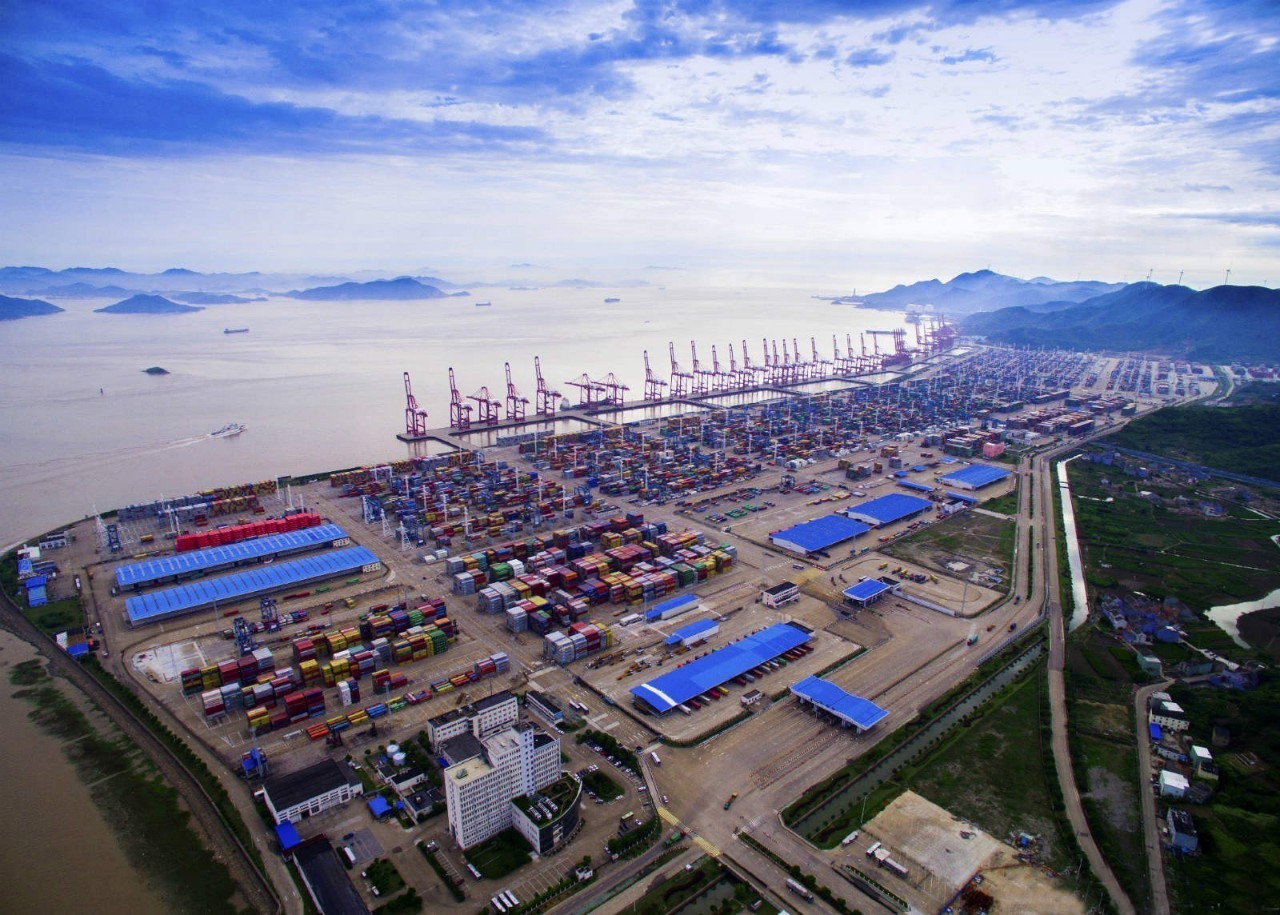
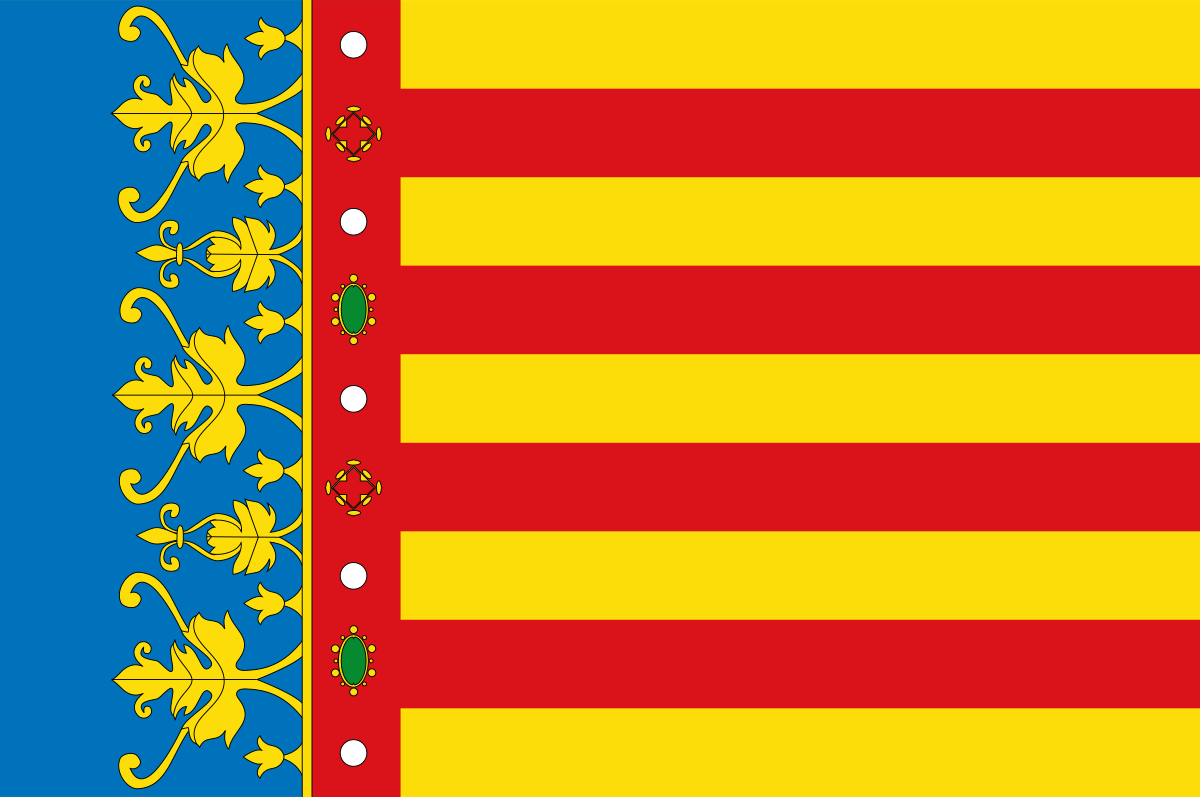 Valencian Community
Valencian Community
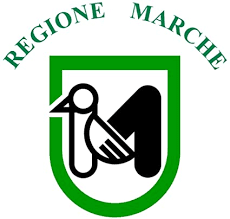 Marche
Marche
 Arkhangelsk Oblast
Arkhangelsk Oblast